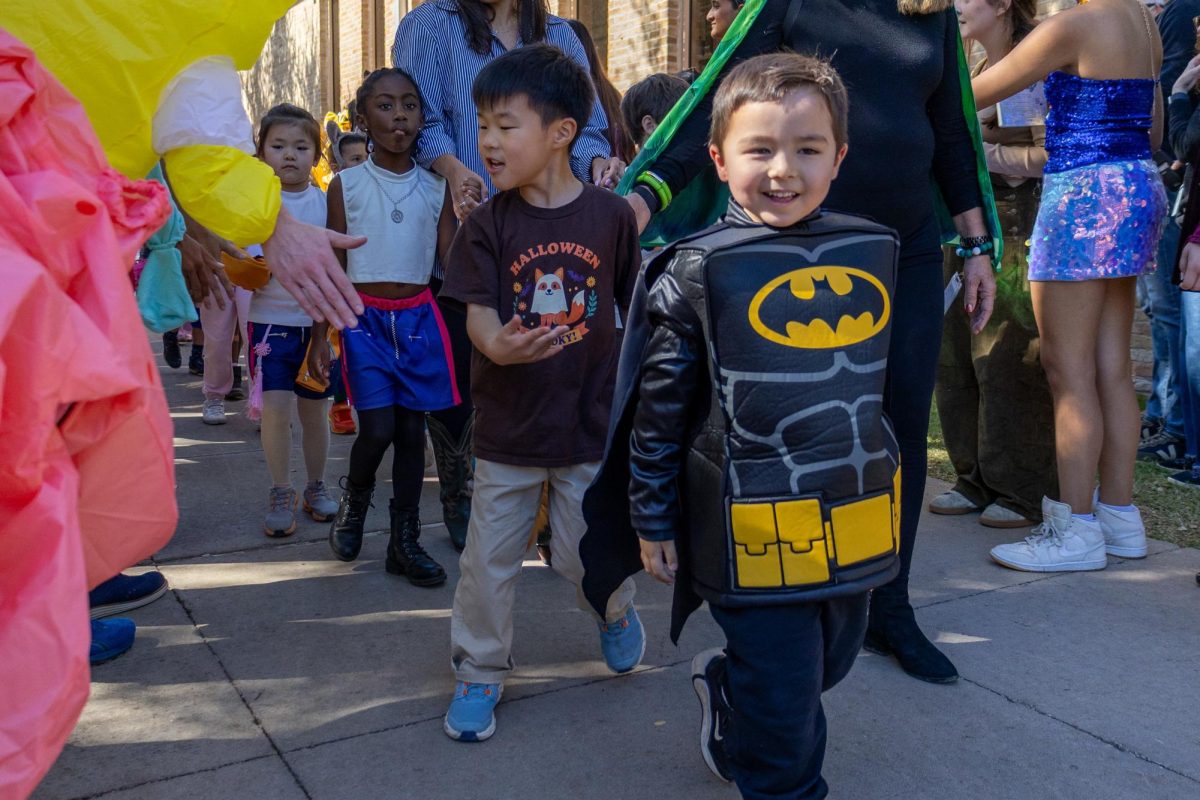Greenhill’s third annual Integration Bee garnered a record amount of attention from Upper School students, attracting math enthusiasts and fans alike.
Twenty-six students competed in this year’s event, which was held in the Lecture Hall during Hornet blocks. Over three days, each student competed in one-on-one elimination rounds that culminated in a final round.
The final round featured seniors Aditya Pulipaka and Dibyadeep Saha, with Pulipaka claiming the first-place victory.
“I think there’s always room for improvement, but overall, I’m content with how I performed and leaving the Upper School on a good note,” said Pulipaka.
Organization
The tradition began a few years ago when students Tim Nadolsky ’22 and Kevin Han ’23 approached Math Club co-sponsor Jessica Chu with the idea. Nadolsky and Han had seen an Integration Bee hosted at colleges and other math competitions. The pair created questions and refined the rules, and the first Greenhill Integration Bee came to fruition in 2022.
Creating questions is one of the hardest aspects of organizing the Bee, according to Chu.
“The bulk of the work is finding the questions and making sure they are at an appropriate level of difficulty,” said Chu. “Then, because it’s all single-elimination rounds, you want [the questions] to go from easy to hard.”
The Math Club leaders talked to Upper School Dean Jack Oros to ensure that competitors could cut the lunch line and get to-go boxes so they could make it to their rounds on time. They also put together a sign-up form and randomized the draw.
Many of this year’s participants also competed last year. This includes Saha, who says he decided to prepare for this year’s competition.
“[Last year,] I had no preparation, and I wasn’t even aware it was happening until like a day before doing it, so I wound up with no preparation and didn’t do very well,” said Saha. “Because of that I was like, ‘okay, you know what, we’re going to be prepared this time.’”
Many other competitors prepared ahead of time as well. Math Club leaders began advertising for the bee at the end of February. Aside from increased preparation time for competitors, this allowed excitement and anticipation to build around the Bee among the student body.
For instance, prior to the start of the competition a group of students analyzed the bracket and made predictions on the @ghintegration_bee Instagram account. One of their analysis videos amassed over 1,600 views.
Senior Anwar Battikhi, who helped run the Instagram account, says their goal was to increase student engagement.
“I think in general the Integration Bee is one of the more exciting things Greenhill does every year, but people don’t always get into it because it’s math,” said Battikhi. “We thought that if we could figure something out that helps engagement, that will encourage more people to join in the future.”
Chu says the turnout in the Lecture Hall was the most she’s ever seen at an Integration Bee.
“I felt like a lot more people were coming out to cheer on their friends, which was great, and I felt that the audience was excited and cheered for whenever someone got a question right or supported whenever someone was stuck,” said Chu. “I also liked how the audience wanted to try the problem too, although sometimes they tried a little too loud.”
Math Engagement
Ultimately, the goal of the Integration Bee is to increase engagement and participation in math.
Math Club co-sponsor Melissa Battis proposed that future Integration Bee competitions could be held in the social staircase area of the Valdes STEM + Innovation Center to attract more attention.
Additionally, Pulipaka says that Math Club is trying something new this year with the Geometry Bee.
“The Integration Bee requires you to know how to integrate and so only BC [calculus] and Vector kids, as of now, know all the integration tactics,” said Pulipaka. “I’m sure some people in lower grades were like, ‘Man, I wish I was part of this.’ So, this year we’re trying to get the Geometry Bee started and that should get more of the younger kids involved.”



